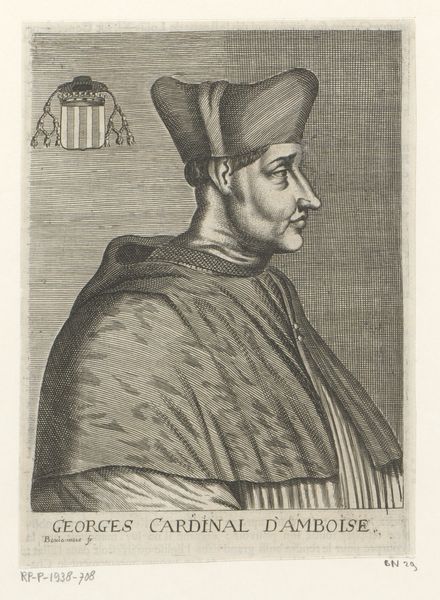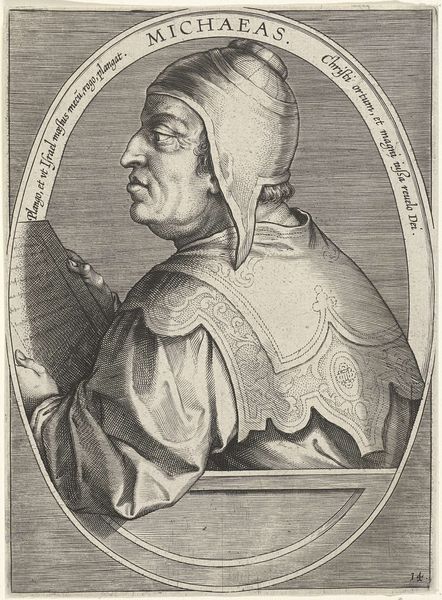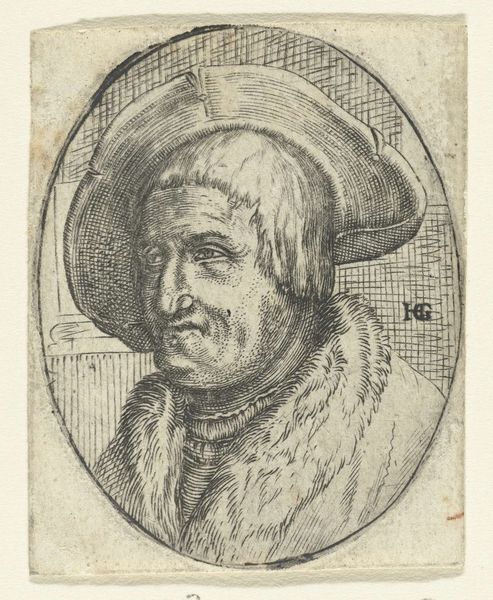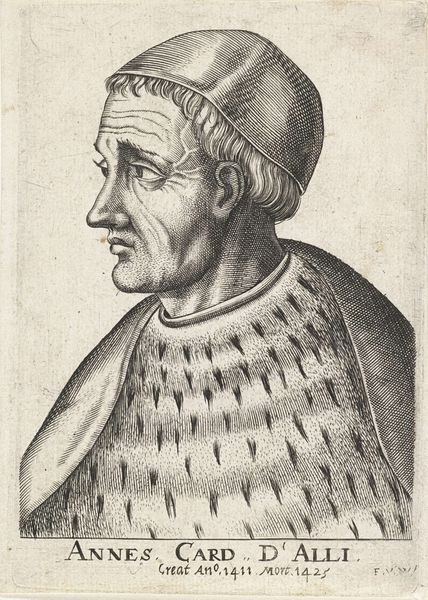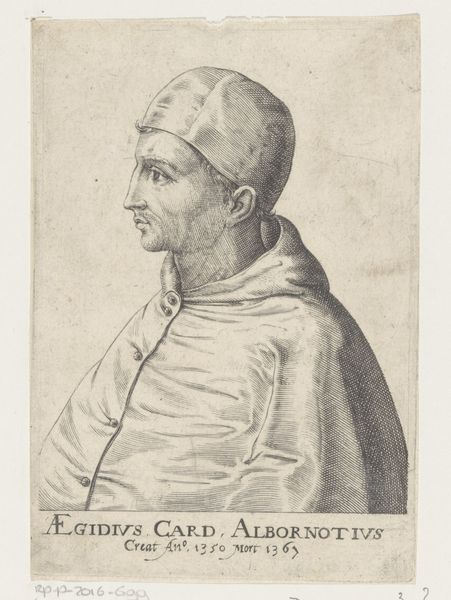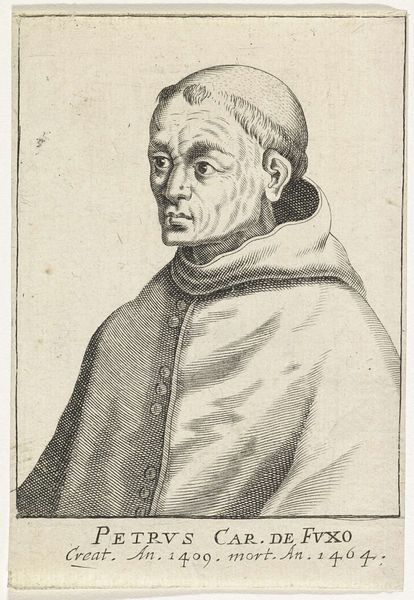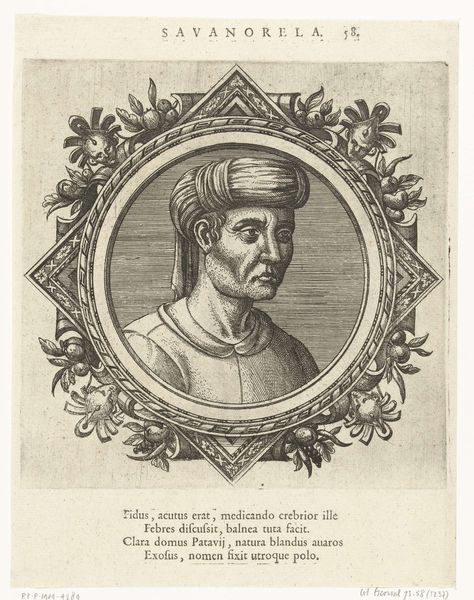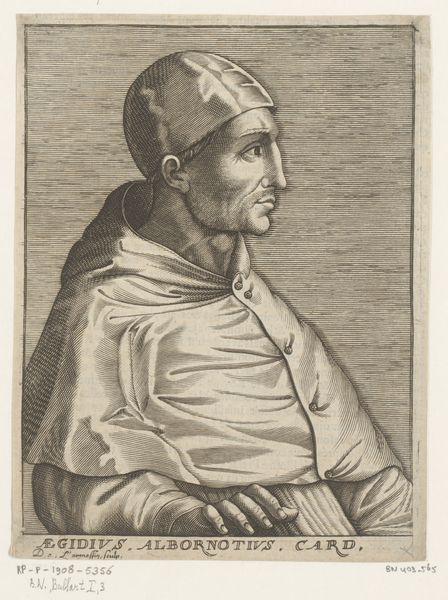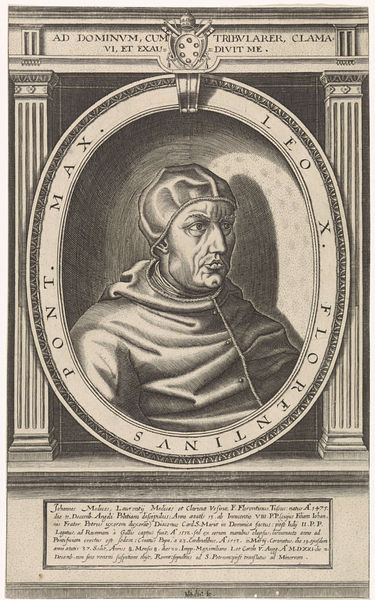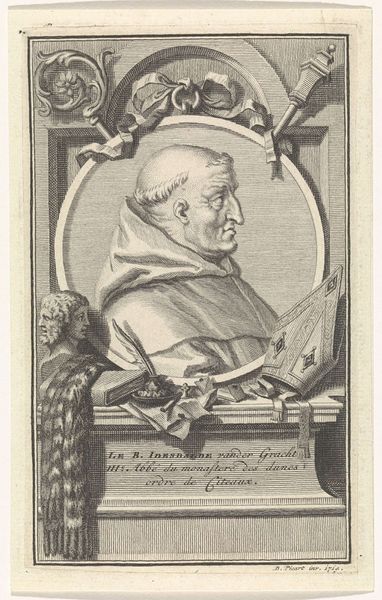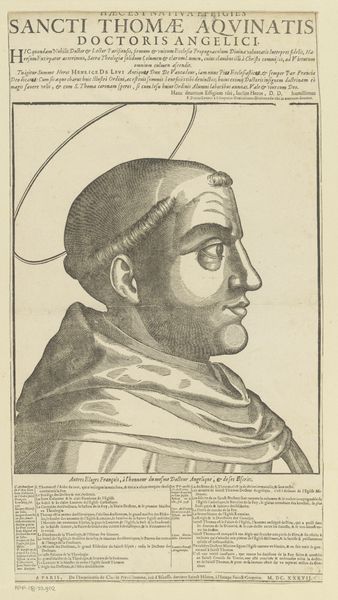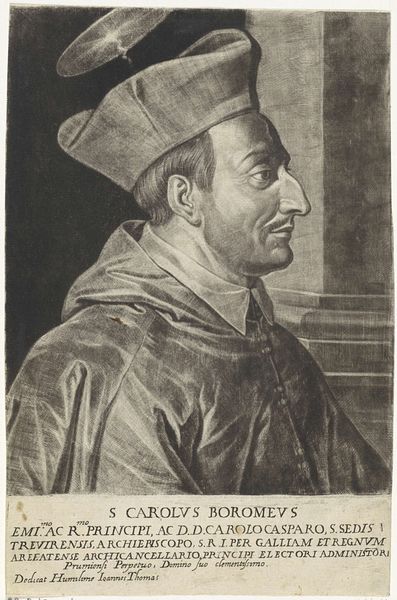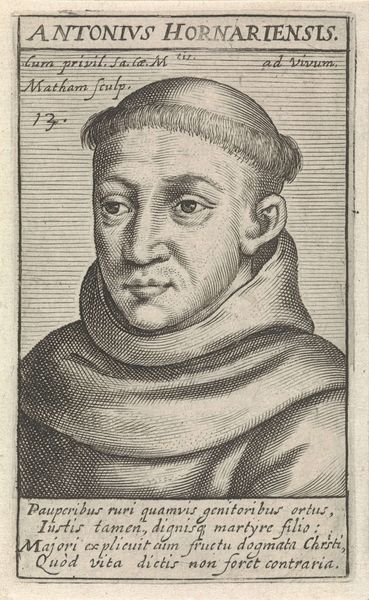
Portret van de Italiaanse kardinaal Ascanio Maria Sforza Visconti 1636 - 1679
0:00
0:00
engraving
#
portrait
#
baroque
#
old engraving style
#
line
#
portrait drawing
#
history-painting
#
engraving
Dimensions: height 126 mm, width 94 mm
Copyright: Rijks Museum: Open Domain
Curator: Here at the Rijksmuseum, we have a rather fascinating engraving titled "Portret van de Italiaanse kardinaal Ascanio Maria Sforza Visconti". It’s attributed to Frans van den Wijngaerde and believed to have been created sometime between 1636 and 1679. Editor: My first thought? Austere. Almost…clinical? But the texture, the way the lines create depth in that robe, pulls you in despite its coldness. Like peering through time. Curator: Indeed. It's the precision of the line engraving that dictates much of its effect. Look at the controlled use of hatching and cross-hatching. Notice how the density of these lines shapes the contours of the Cardinal's face, giving weight and volume to his features. The baroque sensibility is clearly visible in the theatrical treatment of the robes. Editor: You're right. There's an almost tangible quality to the fabric. And the way it falls...it whispers of power, doesn't it? The choice of engraving seems deliberate—almost a translation of flesh and blood into pure intellect, rendered in the sharpest monochrome. I can't help feeling like I'm analyzing a power structure when looking at it. Curator: Well, the process of engraving, its reliance on skill and repetitive labor, elevates the image from a simple portrait to a manufactured object, almost industrially. Editor: But is it so sterile? I think the artist's hand still makes itself known. Notice that slight softening around the eyes. There’s something human lurking behind the deliberate technique. A bit subversive perhaps? Curator: Possibly. Considering that prints such as this were reproducible, it allowed for dissemination of power—or at least its image—far beyond the elite circles. Editor: Hmm. Maybe it's the engraving style itself that gives it this...eternal quality. The subject might be a man but its method offers an analysis on the society that this Cardinal has inhabited. Curator: It's a reminder of how materials, methods, and societal forces intertwine to create a historical object, or, to create an aesthetic impact that extends even to us today. Editor: A thought-provoking collision of spirit and technique. The ghost in the machine, perhaps?
Comments
No comments
Be the first to comment and join the conversation on the ultimate creative platform.
